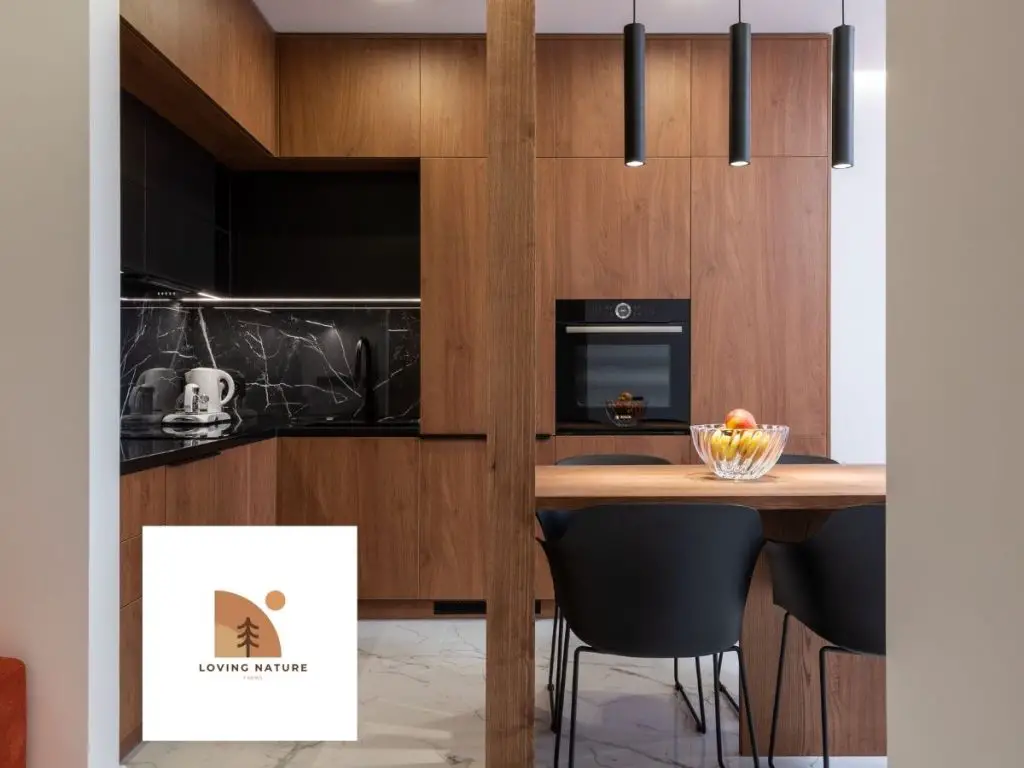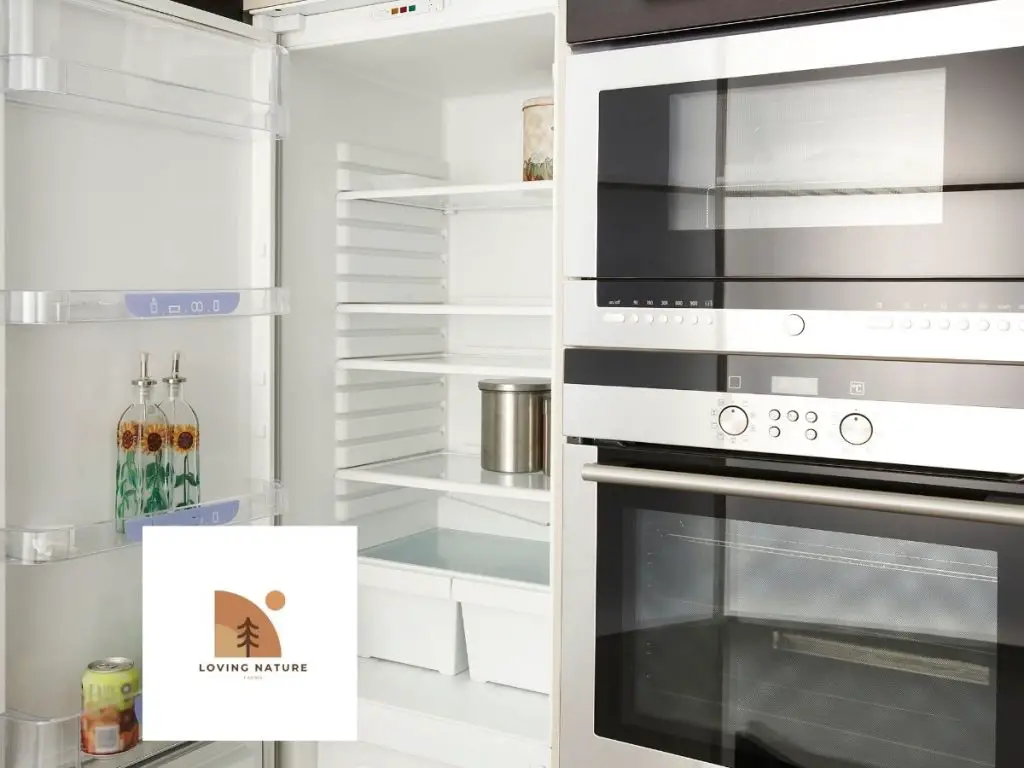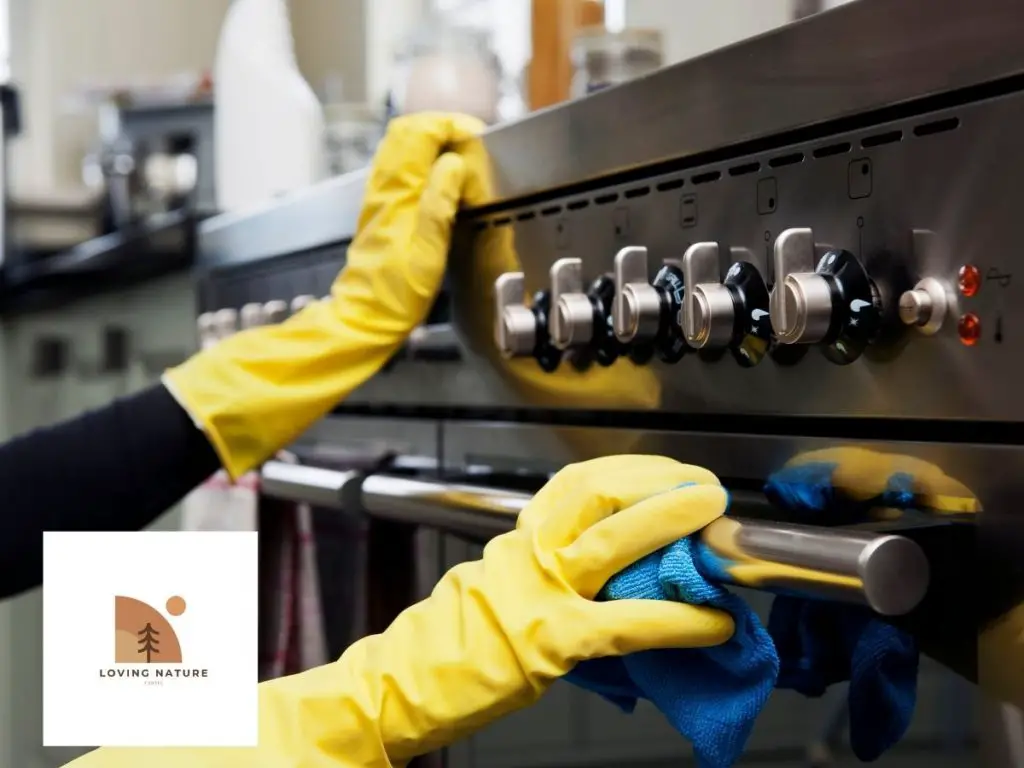Do you have a lot of kitchen appliances? If so, you may be wondering how close your fridge can be to your oven. Believe it or not, there are specific guidelines that dictate how much space needs to be between these two appliances. In this article, we will discuss the recommended distance and why it is important. Keep reading to learn more!
When placing your new refrigerator next to your oven, there are several things to consider. The location can limit foot traffic, which could lead to accidents in the kitchen. You should also consider proper ventilation and space between the two appliances. Read on to learn more. This article will also cover the importance of good warranty. Remember, major appliances are expensive to buy and install. Consider these tips to ensure your new refrigerator will last for a long time.

Insulation can reduce the transfer of heat
If you want to avoid the possibility of overheating when you place your refrigerator next to your oven, the best way to do so is to use an insulating sheet. This will help keep the interior of the refrigerator cool, while also preventing grease droplets from transferring to the oven. However, you should be aware of the limitations of this approach. You should always check your warranty before purchasing such a big appliance, as it can be expensive to install.
Refrigerators are notoriously noisy, so you should avoid placing them right next to them if possible. The reason for this is that they are not well insulated, which means that they release more heat than they take in. However, modern kitchens can accommodate multiple appliances. Insulated fridges have stronger materials to prevent heat transfer. This is important if you want to enjoy a longer refrigerator life.
A good thermal insulator is one that conducts heat poorly. It’s important to choose an insulating material based on the temperature of your oven and fridge. Water and ice are very good thermal insulators, but they don’t conduct heat well. So, if you want your refrigerator to last, consider placing it next to an oven instead. The best way to reduce the heat transfer between these two appliances is to use the insulating material.
Adding insulation is important for both the efficiency of the fridge and the kitchen. By keeping the temperature of the fridge and the oven at the same level, you’ll enjoy an even cooler kitchen. Using insulation can also help reduce the amount of heat transferred between the two appliances. For example, it can reduce the amount of heat transfer between the two appliances, and this is essential to keep the interior cool.
To further reduce the heat transfer between these appliances, you can embed the fridge into a box to protect it from the heat generated by the stove. The box will act as a heat barrier and protect the fridge from splashes. If that is not possible, you can use a partition or screen between the refrigerator and stove. If space is not available for an additional partition, you can use tempered glass, MDF panels, or plywood.
Proper ventilation
It is imperative to have proper ventilation when placing your fridge next to an oven. Because most airflow passes through the top, avoiding covering it is imperative. However, you can add a rubber mat to avoid sliding. In addition, make sure to put breakable items in boxes to prevent them from getting crushed. Using a combination of these steps will make your kitchen cooler and more energy efficient. If possible, install air conditioning in the area as well.
Refrigerators need adequate ventilation. The sides, top, and back of your fridge should have sufficient space for proper ventilation. Avoid placing anything on top of the fridge that could block the airflow and cause it to overheat. Additionally, it is dangerous to place objects on top of a fridge, including flammables. Keep the clutter to a minimum. If this is not possible, you may need to consider buying a stand for your fridge.
If possible, place your fridge away from the stove and oven. They are very close, and direct contact can cause excessive heat transfer and make it difficult for the fridge to operate properly. However, it is possible to install a refrigerator next to an oven as long as it is installed properly. In any case, check the manual of the oven to see what the recommended distance is. There is also a guideline that states that the fridge should be at least five centimeters away from the stove.

Proper spacing
When it comes to kitchen layout, it is important to give your refrigerator enough space to breathe. Putting your fridge next to your oven creates a heat exchange that could shorten the life of your fridge and cause you to spend more on energy bills. The right spacing between your oven and refrigerator is critical for the proper operation of each appliance. However, it is important to keep in mind that not all kitchens have the space for this type of appliance, so consider the size of the area before you make your final decision.
You should also keep in mind that your fridge will require proper ventilation and space to function correctly. When confined, your fridge will work harder and could break sooner than expected. If you are installing a fridge next to an oven, it is important to follow the instructions carefully to avoid damaging the appliance. Before you place your fridge next to your oven, consult the user manual to see if this is possible. It is also important to make sure that your oven has enough space for ventilation.
Ideally, you should place your fridge at least 20 cm away from your stove. However, it is not recommended to place it next to a gas stove. Electric stoves need at least 2 cm of space to avoid overheating. However, there are some exceptions to this rule. For instance, if you are planning to install a new refrigerator, it is better to choose one that has enough room for both appliances.
It is best to avoid putting your refrigerator next to an oven if you have a small kitchen. The heat from the stove can cause the compressor to work at its highest capacity and may end up destroying the fridge. This can lead to expensive power bills, power usage, and even a power supply failure. Besides, this configuration can make cleaning more difficult. A corner kitchen is also an option but it comes with a few disadvantages.
Energy efficiency
If you have a small kitchen, you might be wondering if it is worth placing your fridge next to the oven. The answer is yes, but there are some considerations to consider. If your fridge is next to the oven, you need to keep in mind the temperature of your oven and fridge. The space between the two appliances should be at least two centimeters apart. While there is no need to place them next to each other, there are several ways to make them more energy efficient.
The ideal distance between a fridge and an electric stove is about 20 inches, but not all kitchens have this much space. Moreover, the distance between these two appliances may be less than the recommended distance. As a result, you might have to make do with a less-than-ideal placement. However, it is important to keep in mind that the distance between your fridge and the oven can be less than five centimeters.
Another way to increase energy efficiency when placing your fridge next to an oven is to avoid installing it next to hot appliances. This will reduce the amount of times it takes for the fridge to cool down. The reason behind this is that the condenser coils are responsible for releasing heat and should remain clean at all times. Dirty coils can increase the compressor’s workload, shortening its life. If you have a pet, vacuuming the coils is a must.
Placing your refrigerator near an oven or another heat source will affect its energy efficiency and longevity. Refrigerators that are exposed to heat will need to operate more often to maintain internal temperatures. Moreover, placing them near an oven or a window will make the temperature in the room cooler, which in turn will reduce energy consumption. Solar window films may also help in reducing energy costs. You should take all of these factors into account when placing your fridge next to an oven.
While you are putting your fridge near an oven, you should keep the temperature of your freezer and refrigerator at the right level. As a rule of thumb, you should keep your freezer temperature at about five to seven degrees below the temperature you need to keep your foods fresh. When your refrigerator is half full, it uses less energy than an empty one. Another way to improve energy efficiency is by filling the empty space in the fridge with water.

Final Thoughts
Placing your fridge near an oven can have a negative impact on its energy efficiency. If you are looking for ways to save energy, it is best to avoid this configuration. You should also keep in mind the ideal distance between these two appliances. Additionally, make sure that your oven has enough space for ventilation.
Leave a Reply